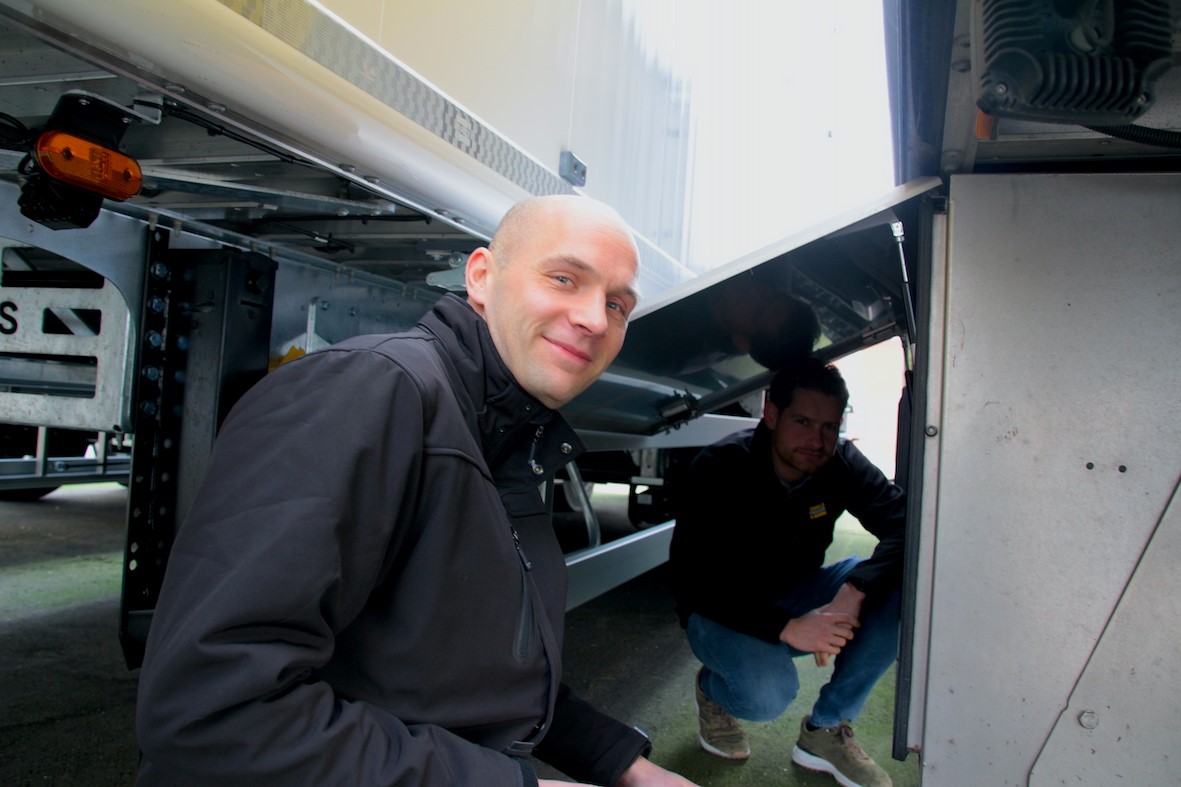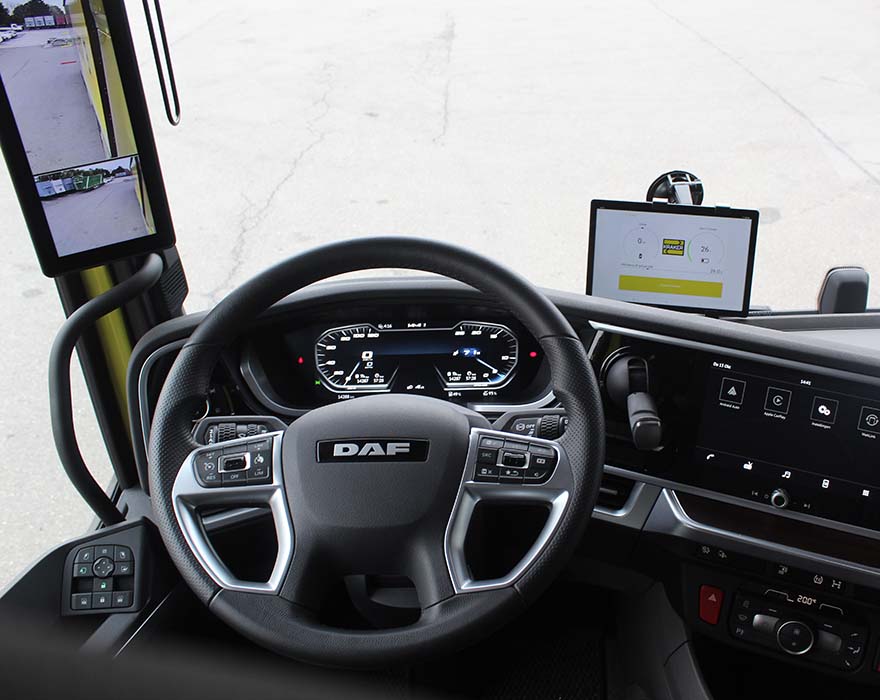
E-Force development is a long and intensive process
In Q3 of 2022, Kraker Trailers introduced a new and high-profile innovation: E-Force, a hybrid moving floor trailer. E-Force stores the energy released during braking in special batteries and then uses that energy during middle axle acceleration and unloading. This results in substantial savings on fuel consumption. Such innovation requires immense innovative capacity from all parties involved. You can read about the intensive process involved with developing E-Force in this article.
E-Force: innovation at its best
Innovation is a key pillar at Kraker. Kraker's innovations are aimed at maximising added value for customers. When it comes to E-Force, that added value translates into fuel savings.
Moreover, Kraker is fulfilling its social responsibility and contributing to the goals set out in the Paris Agreement. It is expected that CO2 emissions will be taxed by the government in future. This is one of the reasons why it is becoming increasingly important for carriers to drive as cleanly as possible. Kraker Trailers firmly believes that transport can be smarter and cleaner, which is why E-Force was developed.
An innovation like E-Force involves several parties. Kris van Meele is the driving force behind this project within Kraker, and Rob Koppejan (RKI Sustainable Solutions) also plays a role as an external consultant. Michel van Klink of Van Klink Engineering is working with Kris on the technical design. They assemble the components, and bear the responsibility for building and testing E-Force. Rick Gijsberts of GOcontroll is in charge of the hardware and software.
“With such a project, you start with a proof of concept, in other words, you want to test the feasibility of an innovation. This is not where you look at how a product is developed, but whether it can be developed, from a technical point of view. For this step, we engaged HAN University of Applied Science in Nijmegen. After they completed their work and shared their findings with Kraker, we took the next step. That was the collaboration with GOcontroll," Kris said.
GOcontroll Modular Embedded Concepts took over from the HAN and continued with the further development of the hardware and software.
Rick Gijsberts discussed the development process: "When GOcontroll stepped in, our first step was to identify where the project stood, based on what HAN was already doing. We analysed and optimised the already developed software and further extended it with specific functionalities needed for reliable field testing. The control hardware has been replaced by the GOcontroll Modulin controller.

The choice of GOcontroll is based on the company's vast experience and knowledge. GOcontroll was created in 2011 as a result of the demand for custom-made hardware for various development projects. The Dutch company previously applied their knowledge and skills in various projects for the business market in particular.
Finding the limits of the system
Rick Gijsberts talked about the steps taken to launch the first prototype: "When the software and hardware were functionally at the required level, we scheduled test runs. Its aim was to test the limits of the system. E-Force is mature in design, now the challenge is to identify and eliminate the teething problems that come with such a journey. The tests we carried out in the summer of '22 served to further fine-tune the software to store as much "lost" energy as possible in the batteries. Bosman then commissioned an E-Force in Nisse. E-Force was tested in real-world conditions for 2 weeks on a precisely plotted track. Based on this trajectory, we set a benchmark [= a reference point, ed.]," Rick explained. "For instance, we monitored performance remotely and made several over-the-air updates to the algorithm. Those updates optimised the presentations and allowed us to push the boundaries of the system."

Substantial savings on fuel consumption
If you put it very trivially, E-Force is actually a choice option for carriers, but then you are actually selling this pioneering innovation short. Special hardware and software and a balanced battery pack ensure that the trailer stores the energy released during braking. Since this energy is used during unloading and when accelerating the middle axle, you save fuel. Savings of up to 20%. E-Force can drive both a shaft and the hydro pump through smart operation of the double coupling on the electric motor. The electric motor can be disconnected from the shaft when it is not in use. This significantly reduces resistance. And all of that makes E-Force unique.
"The E-Force principle is applicable to various trailers, but there are specific requirements regarding the construction of the trailer," Rick explained.
"There is still a considerable way to go," he continued. "Developments do not stand still and everything is constantly changing. For example, the technology needed for the battery comes with a hefty price tag, but we are constantly finding new alternatives for that too."
Rick is not only excited about E-Force, but also about working with Kraker. “With this project, I closely collaborate with Kris, Michel and Rob, and that's going very well. Besides that, it is inspiring to work with a company like Kraker, where innovation is one of the pillars."